About Us
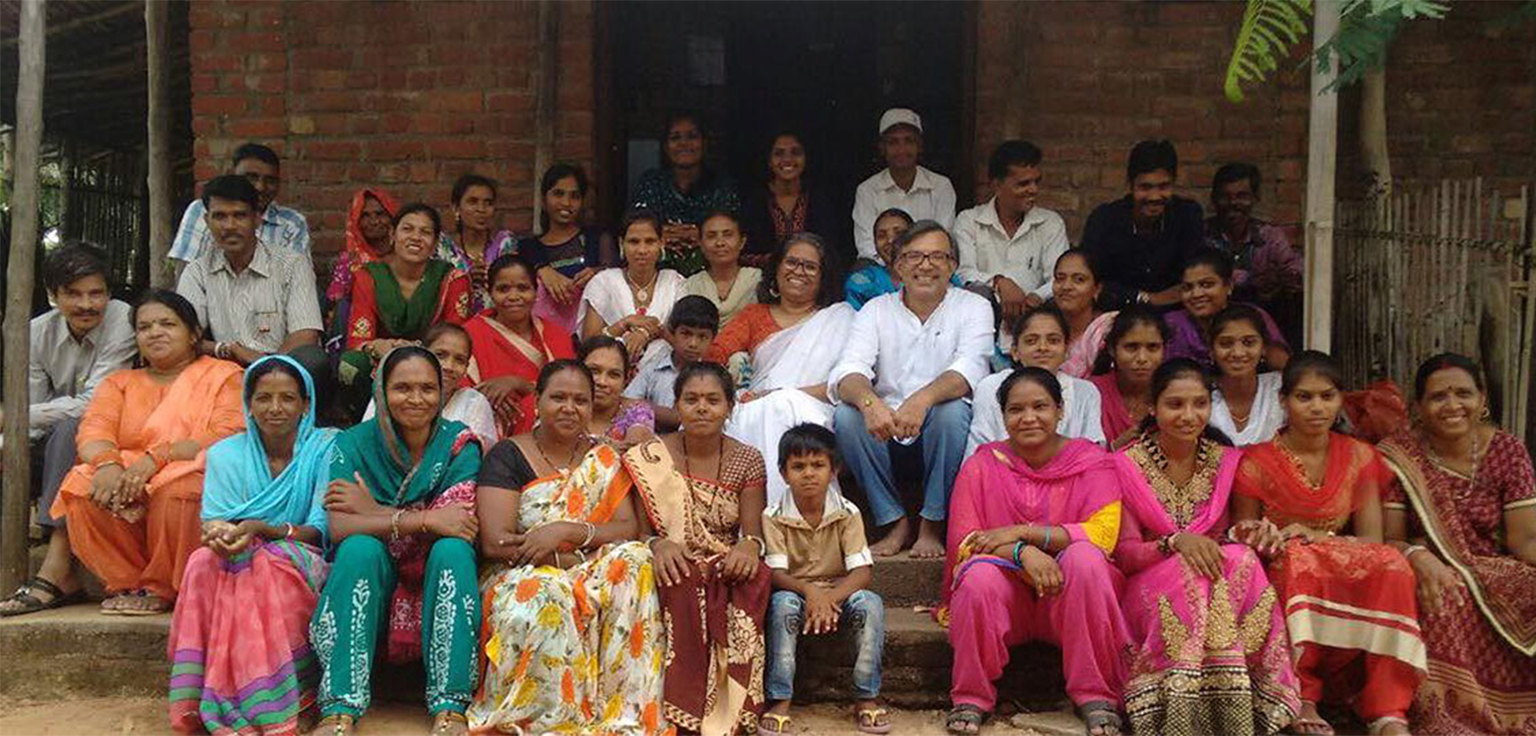
Women’s work cannot be understood within the dichotomy of paid and unpaid, or the public and private. May it be the unpaid, invisiblized and unacknowledged household and care work, or the paid participation in the labour force, or the subsistence activities women engage in, women’s work is always mired within the politics of gender. Due to the dual focus on livelihood security and women’s empowerment, the development interventions are often directed at providing women income generating opportunities through formation of SHGs. However the contention with such interventions roots from the fact that they rely on the existing gender and caste power relations to implement the intervention. This process rather than challenging those power structures, render them more rigid. However, this is where Sahaj’s work in the livelihood sector differs.
Working for the last 30 years in the livelihood sector, Sahaj, based out of Dahod in eastern Gujarat, provides non-farm livelihood opportunities to tribal women and has curbed the outward migration from the district. Sahaj has committed itself to promoting sustainable development through bettering trade conditions for tribal artisans and ensuring labour rights of marginalized producers and workers. It envisions a just society where women possess the capability to make life choices and lead a dignified life.
THE CONTEXT
To understand what Sahaj has been doing for almost last three decades, we first need to know about the Dahod where the organization was born. Situated in the eastern corner of Gujarat, bordering Rajasthan and Madhya Pradesh, Dahod is one of the most backward districts in the state. It is predominantly rural and majority of its population belongs to ST communities Deprivation of this region can be traced back to the time of the colonial rule in India. Formerly a prosperous region, Dahod is home to the tribal groups that fought back the britisher’s intrusion into their lands and lives with great valour. Blacklisted as the land of ‘aggressive’ and ‘untamable’ tribals, the british clamped down on the resistance brutally, ate into their forests, plundered their resources and left nothing for the ones who survived. The systemic neglect, which continued even post-independence, towards the region impoverished the lives of who survived and pushed them to edges of marginalization.

This history of marginalization reflects in the economic, social and human development indicators – low literacy rate and average years of schooling among women, high incidence of early marriage among women, negligible access and availability of reproductive Health facilities, maternity care services, Urinary Tract Infection, leucorrhoea with other vaginal infections and disease. and availability of family planning and maternity care services, low child immunization rates, poor nutritional status, high incidence of anemia among women, poor sanitation facilities, lack of gainful employment opportunities, low political participation and implementation and access gap between the citizens and the state machineries.
The high dependence on rain-fed agriculture and lack of other employment opportunities make Dahod a prominent source region for migration. This continuous migration to nearby towns and cities disrupt their children’s schooling and entrap them in a vicious cycle of impoverishment. Migration is also interlinked to the status of women and prevalence of practice of bride price among the tribals. The price of the bride is decided based on her ability to work and earn wages. She is reduced to a mere income generating commodity brought into the family through marriage. She is stripped of any individual identity thateven the ornaments she wears bear the name of her male guardians. The newly bride joins the migrated family members soon after the wedding to work as wage labourers often in the construction sector. The extremely poor working conditions and lack of any control over her own wages reproduce the gender disparity and keep the woman marginalized.
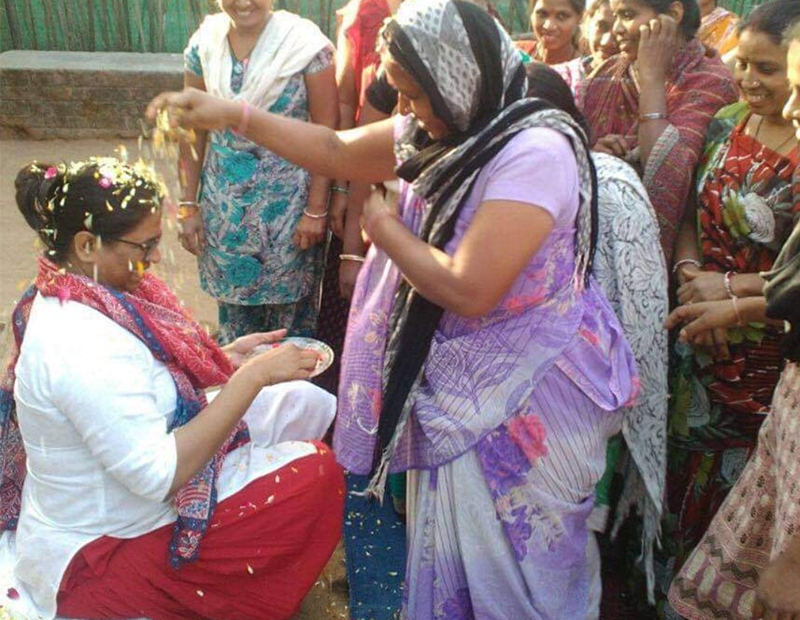
THE JOURNEY
Like every transformation takes birth out of a belief about the possibility of a better future, Sahaj was born out of the desire to break this circle of deprivation and improve the status of these women by providing them an alternative livelihood opportunity. When in 1994 Jabeen (founder and director of Sahaj) started working with 14 tribal women for a project under the N M Sadguru Foundation, she was moved by the urge to make herself and her skills to useful to the betterment of the lives of these women. And that is how the story began.
Jabeen was entrusted to work with a handful of tribal women, and realizing the most common income generating activities were really distant from the lived realities of these women, chose totransform the beadwork jewelry the women made for themselves into marketable goods with design and manufacturing inputs. The visitors’ response from the first exhibition in Baroda proved that such a product line was new and has great scope in the market. The small group expanded into multiple groups as more women were mobilized and they were trained to produce for the larger market, traditional clothing, accessories and other utility products according to the demand.
In three years, the growth was so overwhelming that there was a need to expand the financial base of the group and that was how linkages with the Friends of Women’s World Banking (FWWB) was sought and a loan sanctioned. The groups were by then working under the name of SahajSadguru Foundation, as an independent project of the SadguruFoundation and they began even exporting their supplies. By 1998, Jabeen realized the need for an independent legal identity for the organization and after a long struggle, with the eminent designer VillooMirza and Vijayalakshmi Das from FWWB in the trustee board Sahaj was registered as an independent organization in 2001.
It has not been an easy journey. The organization has faced several challenges in its journey, and three such downfalls from which pulling itself up again was quite a mountainous task. But as the story goes, each time Sahaj managed to rise again and fight back. The credit, according to Jabeen, would go to the unbeatable spirits of the women associated with the organization who are never ready to resort to quitting in the face of challenges.The organization and the women held each other’s back at all times, and together are moving forward, changing one life at a time.
Sahaj bridges the gap between the artisans and the market, by training women to become skilled artisans and entrepreneurs, and by providing them with business infrastructure and support services like finance, education and counseling. By professionalizing handicraft and organizing the tribal artisans, Sahaj opened an avenue of micro enterprise by providing design, market and management support. The artisans are involved in not merely production but all aspects such as selection of work, designing, production and marketing. This exposure and the intensive skill trainings and skill upgradation workshops mould each woman into a complete manager and leader on her own.
Through the SHGs of artisans formed in the community they get a chance to attain financial literacy and also the groups are empowered to make decisions regarding the products they want to work on, and the trainings they would need. Also, the linkages with banks and other government organs, sought by Sahajon behalf of the groups, provide them a footing to initiate independent relations with the same at a later point when they are capable of it.
These facts about the organization and its functioning are known. And there are numbers which would tell you about the impact and outreach Sahaj has had over the years.Sahaj through its work has managed to posit itself as an answer to some important questions about development, the impact of livelihood interventions, the power relations that can be questioned and altered, and the changes in the social position of the lives involved. But beyond all these, Sahaj is a story about aspirations, desires and determination to work for them which the facts and numbers fail to capture. The real impact of Sahaj lies not just in the visible social and economic changes, but also in the intimate, personal and embodied changes of these women and their families, and hence the need arises to understand and chronicle the small seeming changes that have seeped into the everyday lives of these women. This is an attempt to put to words both the macro level impact of this organization that began from one bead necklace and the stories of few women associated to Sahaj and how their lives are intertwined to the journey of the organization itself.
The Impact: Social and Economic
Right from its conception, Sahaj worked towards making people believe that an alternate life is possible – a life of dignity and well-being. Different from the top-down development approaches that seek to bring material changes by making space within the existing structure rather than challenging the inequalities, and assimilate the tribals by imposing a certain lifestyle on them , Sahaj provided them with an alternate livelihood opportunity that empowered them to aspire for and achieve a better life, and thereby increase their well-being. This approach has had a gradual but definite ripple effect on both the material condition of the families and the socio-cultural position of the women.
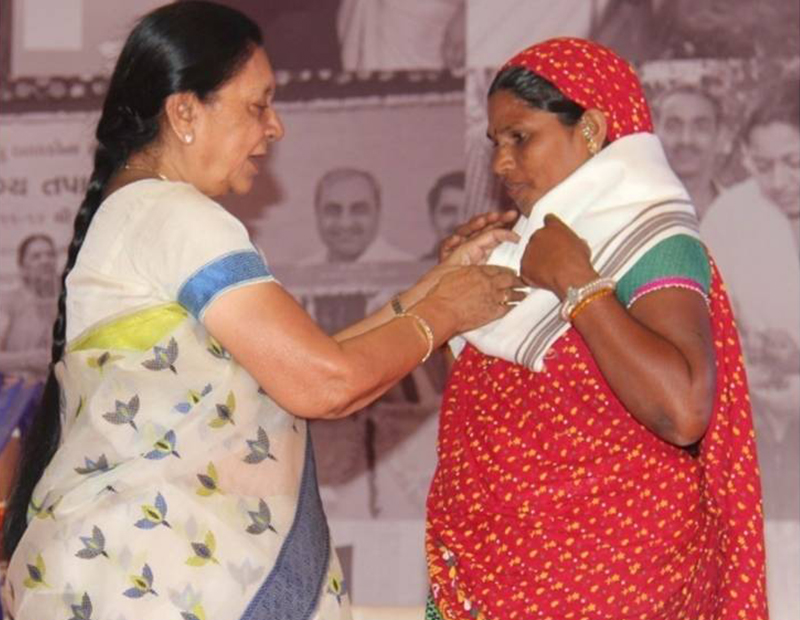
In Sahaj, the artisans are considered the most important stakeholders, not mere targets or beneficiaries of the programme. A sense of ownership and responsibility over all stages of production is built in through participation in the processes and involvement in decision making. Women’s knowledge and inputs are treated with respect and they interact with professional designers to come up with product designs. The trainers are also picked from the lot of artisans and the educated or the second generation from the families that have been associated to Sahaj forms the core of its administration and managerial staff. The artisans themselves go to the cities to put up stalls in exhibitions.This kind of capacity building chisels out professional artisans and leaders out of the women.
Being wage earners have improved the position of women within their families and gained them decision making power and voice. This makes it easy for the next girl in the family to continue with her education or work. Employment also brought these women out of the confines of the household to a world full of possibilities. The upward mobility of the family hence has definite positive consequences for the women in the family. Further, membership in the SHGs also renders the women with financial literacy and ability to deal with the bureaucracy. These SHGs also go on to intervene in the community issues and make use of their funds to solve common issues for instance, water scarcity. The respectability and social acceptance women achieve from being able to solve the problems of her community is a matter of great pride for the women who once were not even considered full individuals.
Sahaj’s work has challenged the economic and social relations that marginalizes the tribals and has been successful in pulling people out of systemic poverty. By curbing migration of tribals to work in highly exploitative labour conditions and providing an alternative source of livelihood where better labour conditions are ensured, Sahaj is opening a path of mobility for these families. The women are staying back rather than bought into marital families to migrate, and children are attending schools.
Wages according to the skill and time spent on work, skill trainings and support, and practice of fair trade along with developing a niche market for the products by tribal artisans strictly based on quality and innovation provides them a chance to earn with dignity. The earning hence bears a sense of entitlement rather than charity, and this makes this intervention a political act that challenges and changes the unequal power relations and provides the tribal artisans an equal footing in the market to compete.
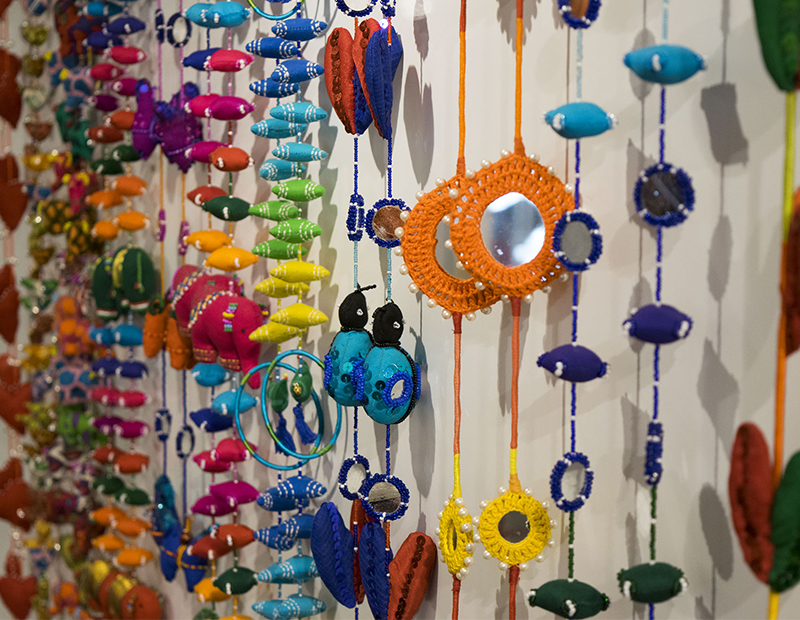
The Impact: Intimate and Intergenerational
Aspirations hold in itself the power to bring about radical transformations. But how are our aspirations formed? It would be wrong to say that aspirations are innate and has no social bearing. We aspire what we believe what we can achieve; we aspire what we think we deserve. The greatest achievement of Sahaj is that it could make believe the tribal women that there is an alternate better life possible, that they too can achieve and be something in their lives. Moreover, the trust the organization places on each of the women gives them confidence and makes them believe that they can achieve something on their own. Sahaj is empowering these women who were always treated as less than humans, never trusted but looked down upon and humiliated, to dream and aspire for more.
Aspirations hold in itself the power to bring about radical transformations. But how are our aspirations formed? It would be wrong to say that aspirations are innate and has no social bearing. We aspire what we believe what we can achieve; we aspire what we think we deserve. The greatest achievement of Sahaj is that it could make believe the tribal women that there is an alternate better life possible, that they too can achieve and be something in their lives. Moreover, the trust the organization places on each of the women gives them confidence and makes them believe that they can achieve something on their own. Sahaj is empowering these women who were always treated as less than humans, never trusted but looked down upon and humiliated, to dream and aspire for more.
The changes we are talking about here are the little ones that are so intimate to our skin, the changes that take years to take place and yet do not announce its arrival. Changes that quietly seep into your everyday life and settle, unnoticed. The little things that an urban bred, middle class girl like me would take for granted. Be it the clothing and ornaments they wear, the way of speaking and the beaming smile as they pepper their conversation with English words, the zeal to learn newer ways of self-expression and connect to the world, the desire to combat technology-be it computers or smartphones, the confidence in their gait, eating with spoon and fork, pride with which you talk about walking to the bank all by yourself, all these are habits that came along through the years as they got to know of a world larger than they had assumed it would be. They choose to live this lifestyle as it gains them respect, as it do not make them seem inferior or subjects of pity in the eyes of the world. Each story below is about what they feel make them dignified equals, and what Sahaj did to them. Each story is a testimony of what can come out of the belief about the possibility of better world and the resolve to inch closer to it taking others along with you. organization itself.
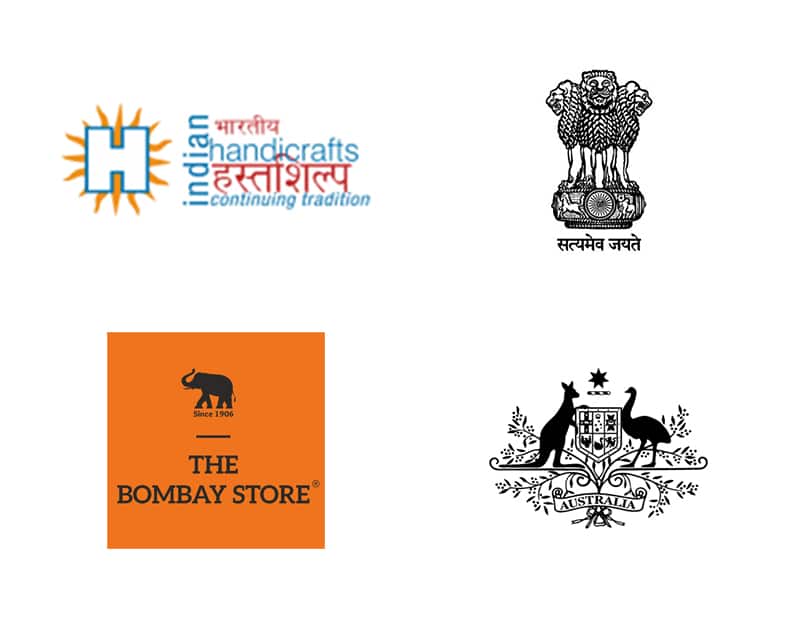
Our Associates
Sahaj is a self-sustaining organization, so there are no big donations accepted. We take up projects from different government departments like Development Commissioner (Handicrafts), Government of India; Rishi FIBC Solutions Pvt. Ltd., Ministry of Tribal Affairs, Government of India, The Bombay Swadeshi Store, TRIFED, Ministry of Tribal Affairs. Government of India, Central Cottage Industries Corporation of India Ltd. Ministry of Textiles, Government of India, Australian Consulate-General, Australia for skill development, design development and capacity building of the artisans.

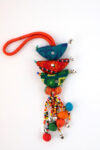 SAHAJ India Keychain Bird...
SAHAJ India Keychain Bird...  Sahaj Classic Series Drap...
Sahaj Classic Series Drap... 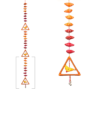 Sahaj multicolors Trigang...
Sahaj multicolors Trigang... 